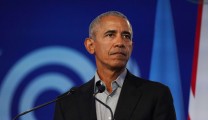Who is Victor Vroom?
Victor Vroom, a celebrated Yale professor, is a seminal figure in the fields of organisational behaviour and psychology. He was born in Quebec, Canada, in 1932 and sadly passed away in July 2023.
His work, particularly the Expectancy Theory, has revolutionised the way we understand employee motivation and leadership dynamics. Vroom’s insights are considered foundational in the study of management, helping shape modern organisational strategies.
Vroom’s notable publications include Work and Motivation, Leadership and Decision Making and The New Leadership.
Unveiling Vroom’s Expectancy Theory
Let’s unpack Vroom’s Expectancy Theory in a little more depth. We’ll begin with the basics.
Core Components: Expectancy, Instrumentality, and Valence
The Expectancy Theory is built on three critical elements: Expectancy, Instrumentality, and Valence.
- Expectancy refers to the belief that one’s effort will lead to desired performance.
Example: “If I make these 100 sales cold calls, I should expect 10 of these leads to progress to prospects.”
- Instrumentality is the perception that performance will be rewarded or recognised.
Example: “If I achieve a 10% conversion rate from cold leads to serious prospects, my boss will be happy, and I may earn a bonus.”
- Valence is the value the individual places on the rewards.
Example: “I’d rather have the recognition than the bonus, since it makes it likelier I’ll be promoted.”
Understanding these components is essential for managers to motivate their teams effectively.
What does Vroom’s Expectancy Theory Say About Motivation?
Victor Vroom’s expectancy theory of motivation explains how people make decisions regarding various behavioural alternatives. Expectancy theory offers the following propositions:
- When deciding among behavioural options, individuals select the option with the greatest motivational force.
- The motivational force for a behaviour, action, or task is a function of three distinct perceptions: Expectancy, Instrumentality (Reward), and Value.
The motivational force is the product of the three perceptions:
Thus, Motivation = Expectancy x Reward x Value

Expectancy: The Probability of Success
An individual’s assessment of expectancy probability is based on experience, level of self-confidence, and the perceived difficulty of the performance goal. Experienced sales reps, for example, have a fair idea of how much effort translates into effectiveness.
Less experienced employees might not yet know what proportion of leads they can convert. Similarly, reps joining a new company, or moving to a different area of sales (for instance from property to software) might also find it hard to judge expectancy probability to begin with.
The success rate in different sales fields ranges widely. Here are two contrasting statistics:
- 2% is the average cold-calling success rate according to LinkedIn.
- BIA/Kelsey claimed a B2B outbound conversion rate of between 10-15% in 2014.
And you’ll find current opinion pieces online describing the cold calling conversion rate as anything from 1% to 10%. That’s a huge variation.
Clearly, whatever level is offered to reps as a target will strongly affect expectation, as employees compare their performance to this theoretical limit.
Instrumentality: The Expectation of Reward
Reward is based on the perceived performance-reward relationship. This is the belief that if someone does meet performance expectations, he or she will receive a greater reward.
There are three elements to instrumentality as a motivating factor:
1. Reward promises are made.
2. These promises are fulfilled.
3. The process of reward is publicised.
Fail in any one of these aspects, and instrumentality will have limited power to motivate. The failure modes are easy to understand:
“There isn’t much of an incentive program at this company.”
“We were supposed to get a bonus, then management said we had to tighten our belts this quarter.”
“I had no idea where to read about the incentive program”
Rewards can take many forms, of course:
- Status rewards: salesperson of the month.
- Cash bonuses: automatic or discretionary.
- Gift schemes: physical rewards, based on performance.
- Reward events: nights out, days off, team celebrations.
- Promotion: a new, better-remunerated position.
- Raise: a pay hike, linked to performance.
As we’ve seen, rewards work as motivators once employees see others receiving them and have a reasonable expectation that their own efforts will garner similar benefits.
Value: The Personal Factor in Motivation
Value refers to the value the individual personally places on the rewards. This is a function of his or her needs, goals, and values.
What someone will value will depend on several factors:
- Their priorities overall (to earn £100K, to be the best)
- Their immediate priorities (to pay the rent, to feel recognised)
- Their psychological preferences (for appreciation, for gifts)
In other words, people may differ between one another in terms of what they value. However, an individual’s own priorities might also vary from day to day.
A wise manager pays attention to the different value systems of their employees, and knows how best to reward each one, so that the greatest motivation is derived.

Even if it’s impossible to keep track of how each rep in a large sales team is best motivated, by offering a range of possible benefits, managers can increase motivational value overall.
In other words, they can provide a supportive nurturing workplace (value 1), a published financial bonus scheme (value 2), public recognition for successes (value 3) and great training and development opportunities (value 4).
In this way, regardless of the psychological make-up of each team member, there is something to remind them how valuable the work they are doing is.
How Does the Theory Differ from Other Motivation Theories?
Unlike other motivational theories that often focus on intrinsic factors, Vroom’s Expectancy Theory introduces a more comprehensive approach.
It considers external influences like the work environment, team dynamics, and leadership styles, highlighting the complex nature of motivation in management.
Here are just some of the external factors that contribute to motivation:
- The organisational culture (competitive, supportive, innovative).
- Team cohesion and morale.
- A sense of purpose or meaning.
- A feeling of appreciation.
- The opportunity for advancement.
Note how abstract many of these motivating factors are. Some might even seem whimsical – a sense of purpose?
However, for many employees, the work they do needs to have some sense of meaning, or value beyond the pay cheque and having like minded colleagues with whom to hit the pub on a Friday night.
A 2020 McKinsey survey revealed that 82% of workers believe that it’s important their company has a purpose. That’s a startling result.
So even if your business is selling rubber doorstops, you need to locate some purpose to satisfy those office philosophers. Fortunately, studies have also shown that workplace relationships and camaraderie rate highly in employee’s priorities.
A Gallup report found that workers with positive workplace relationships “are driven to take positive actions that benefit the business – actions they may not otherwise even consider.”
In other words, in happy workplaces, workers go the extra mile, whereas they’ll clock-off at their contracted hour in offices where they feel isolated or in conflict with leadership.
This is all common sense stuff, of course, but it pays to be reminded from time to time.
Why Expectancy Theory Matters in the Workplace
Expectancy Theory is worth studying because it digs deep into motivation, and as we’ll see, motivation is hugely significant in the workplace.
Let’s look deeper at how motivation drives performance at work.
The Role of Workplace Motivation
Workplace motivation is a critical driver of productivity and employee satisfaction. A well-motivated employee:
- Works harder to achieve their goals and hit their targets.
- Stays longer, and volunteers for more challenges than they otherwise would.
- Collaborates better with team-members and wants to please management.
- Feels fulfilled at work or has a sense of achievement.
- >Isn’t tempted to look at job advertisements to see what else is out there.
- Consistently delivers more effort, with a positive attitude.
Of course, it’s not realistic to expect all workers to be equally motivated each day. Everyone has bad days, whether due to ill-health, personal problems, or simply a run of bad luck.
However, in terms of average levels of motivation, paying attention to all the factors that contribute to worker satisfaction boosts productivity, improves retention, and reduces employee churn. Your HR department will thank you, in other words!
By leveraging Vroom’s Expectancy Theory, managers can create a more engaging and rewarding work environment, leading to higher levels of employee commitment and reduced turnover.
Achieving Desired Organisational Outcomes Through Motivation
Implementing the principles of Expectancy Theory can significantly impact organisational outcomes. Doing so helps in aligning employee goals with organisational objectives, creating a culture of continuous improvement.
The theory assumes that people act to minimise discomfort and maximise pleasure in all that they do. We are efficient animals, in other wise, which is probably how humanity propelled itself to the top of the food chain, after all.
Managers should therefore create workplaces where it is obviously better to act in a manner that aligns with strategic goals. Better for the company AND better for the individual.












Replies to This Discussion